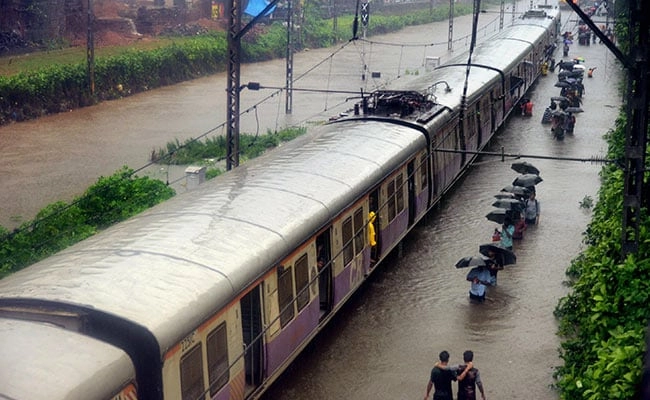Mumbai, the bustling financial capital of India, has been significantly impacted by heavy rainfall, leading to severe disruptions in the local train services that are vital for the daily commute of millions. The intense downpour has not only caused waterlogging on various railway tracks but has also resulted in delays and cancellations of numerous train services. As a direct consequence, countless commuters found themselves stranded at railway stations, grappling with the challenges of navigating their way home amidst the chaos. The local trains, which typically operate with high frequency, have seen their schedules thrown into disarray, leaving many passengers frustrated and anxious.
The relentless rains have compounded the difficulties faced by commuters, who depend on the local train network for timely travel across the city. With major routes inundated, trains have been forced to operate on a limited basis, and in some cases, services have been suspended altogether. This situation has escalated into a logistical nightmare for those trying to reach their destinations, whether for work or personal commitments. Reports of overcrowding at stations have emerged, as people crowd onto platforms, hoping to board a train that may or may not arrive in the near future. The usual hustle and bustle of Mumbai’s railway stations has been replaced with a sense of confusion and uncertainty.
Authorities are working to mitigate the impact of the rains on train services, deploying teams to clear waterlogged tracks and ensure safety measures are in place. However, the scale of the rainfall has posed challenges that are difficult to overcome quickly. Commuters have taken to social media to voice their frustrations, with many sharing their experiences of long waits and the struggle to find alternative means of transportation. Meanwhile, some have resorted to using buses or rickshaws, which have also faced delays due to the weather conditions.
As the situation continues to unfold, it highlights the vulnerability of urban infrastructure in the face of extreme weather events, raising questions about the preparedness of the city to handle such challenges. The reliance on local trains as a primary mode of transportation makes it imperative for authorities to develop more resilient systems that can withstand the impact of heavy rainfall. While the rains are a seasonal occurrence in Mumbai, the intensity and frequency of such downpours may be indicative of broader climate-related changes that necessitate urgent attention and action. As the city grapples with the immediate fallout of the rains, the need for sustainable solutions to enhance the reliability of public transport has never been more pressing.




